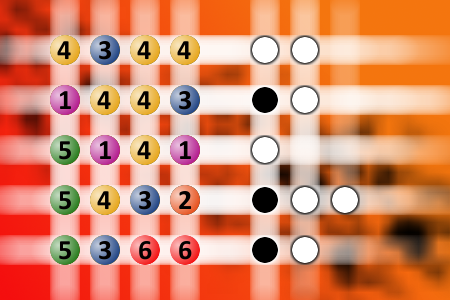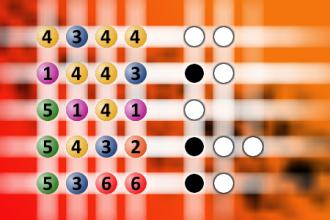Find the right combination
The computer chose a secret code (sequence of 4 digits from 1 to 6). Your goal is to find that code. Black circles indicate the number of hits on the right spot. White circles indicate the number of hits on the wrong spot.Correct answers: 31
The first user who solved this task is Nílton Corrêa De Sousa.
#brainteasers #mastermind

Who Should Have The Toy?
The father of five children had won a toy at a raffle.
He called his kids together to ask which one should have the present.
"Who is the most obedient?" he asked. "Who never talks back to mother? Who does everything she says?"
Five small voices answered in unison. "Okay, dad, you get the toy."

